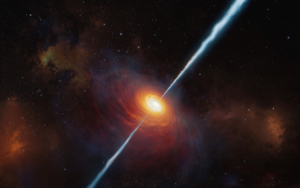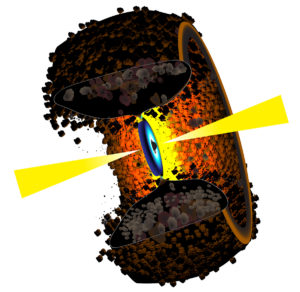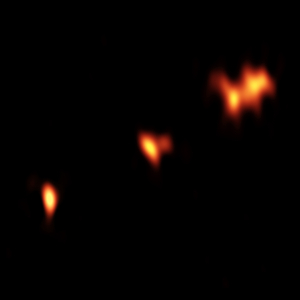Astronomers using the VLA and VLBA have found the most distant cosmic jet yet discovered, material propelled at nearly the speed of light by a supermassive black hole in the core of a galaxy some 13 billion light-years from Earth.


Quasar Discovery Sets New Distance Record
Astronomers using the Atacama Large Millimeter/submillimeter Array (ALMA), along with other telescopes, have discovered the most distant quasar yet found. The bright quasar, powered by a supermassive black hole at the core of a galaxy, is seen as it was only 670 million years after the Big Bang, and is providing valuable clues about how such huge black holes and their host galaxies formed in the early Universe.

VLA Makes First Direct Image of Key Feature of Powerful Radio Galaxies
A dusty, doughnut-shaped feature long thought to be an essential part of the “engines” at the cores of active galaxies, is seen for the first time in one of the most powerful galaxies in the Universe.

Distant Quasar Providing Clues to Early-Universe Conditions
The sharp radio “vision” of the VLBA gives astronomers a detailed look at a galaxy as it appeared when the Universe was a small fraction of its current age, giving clues about conditions at that early time.





